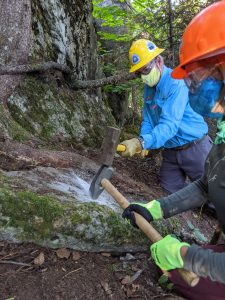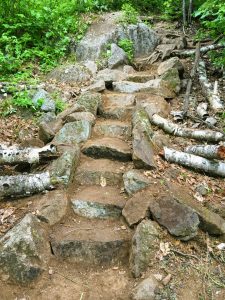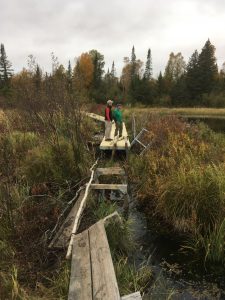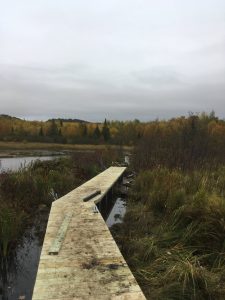Home › Our Stories › Advocacy • Minnesota • Trail Maintenance • Volunteer Stories › SHTA Trail Renewal Program: Partnership Spotlight
Our Stories
SHTA Trail Renewal Program: Partnership Spotlight
The Superior Hiking Trail Association (SHTA) is responsible for 310 miles of trail in northeastern Minnesota between the Wisconsin border near Jay Cooke State Park and the Border Route Trail near the Canadian border.
The Superior Hiking Trail (SHT) stretches down to the Lake Superior coastline from near the Canada-Minnesota border to south of Duluth at the Minnesota-Wisconsin state line. With the 2019 Congressional approval of the North Country Trail Route Adjustment Act (part of the John D. Dingell, Jr. Conservation, Management, and Recreation Act), the Superior Hiking Trail is also officially designated as North Country National Scenic Trail. The SHTA and NCTA staff and volunteers work closely to keep their shared trail maintained, accessible and enjoyable.
Jaron Cramer, Development and Communications Director, provided the NCTA with an interview about the SHTA Trail Renewal Program. Per Jaron, “the SHTA has contracted with the NCTA to provide professional assessments and recommendations for five of the top priority sections of the SHT due for renewal, including popular destinations like the Bean and Bear Lakes Loop and Split Rock River Loop sections. The NCTA has been involved in the program since its inception. We anticipate further partnership with the NCTA as we continue to assess and improve the SHT.”
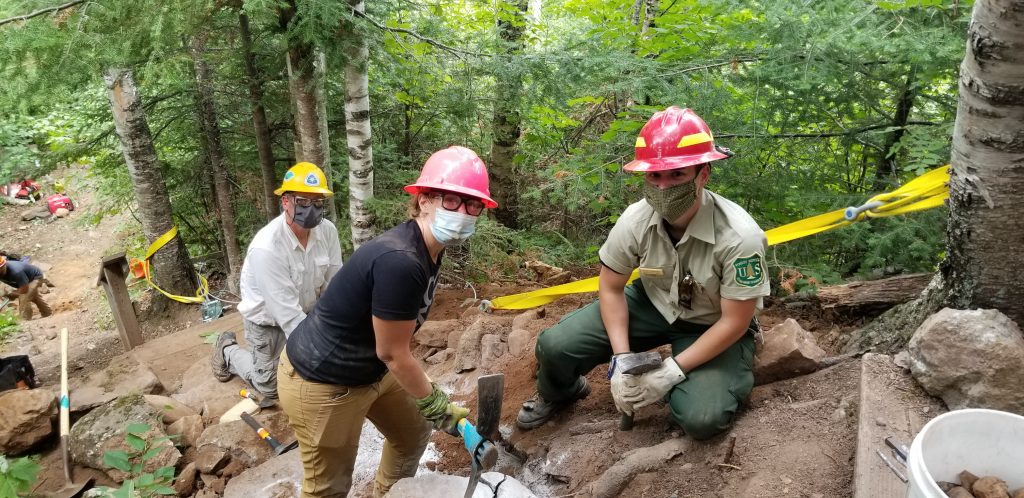
NCTA: Could you please describe this Trail Renewal Program? When was the initial need for it recognized and when was the program established?
SHTA: The SHTA launched the Trail Renewal Program in 2018 as a strategic effort aimed at improving the Trail where it is most needed and planning for future pressures. The program was established shortly after the last section of the SHT was “finished,” as the SHTA shifted focus to caring for the 300 miles of trail built over the last 30+ years.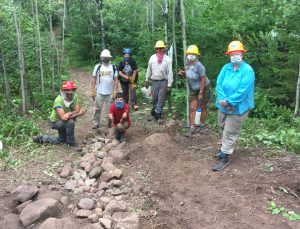
The program emphasizes careful evaluation of trail conditions and focuses on reducing environmental impact and improving user safety. The program is committed to creating a resilient and contiguous SHT to withstand ever-increasing use, the ravages of climate change, and changes in landownership.
The initial evaluations of the SHT were completed with funding provided by the Minnesota Environment and Natural Resources Trust Fund as recommended by the state’s Legislative-Citizen Commission on Minnesota Resources (LCCMR). Since then, many other foundations, business sponsors, and members and donors to the SHTA have helped fund the activities of the Trail Renewal Program.
NCTA: What are a couple main focus areas of the program?
SHTA: The key focus areas of the Trail Renewal Program are ensuring the safety of trail users, reducing the environmental impact of the Trail and use of it, coordinating with public and private landowners, and protecting the Trail’s corridor. Through the program, we’ve also dedicated additional resources to supporting our volunteers with additional training, tools and equipment, and guidance from SHTA staff.
NCTA: Will the trail be evaluated and renewed/repaired on any sort of schedule? Or do you have staff continuously doing this work?
SHTA: There is no set schedule for trail evaluations and renewal work, as every project has unique requirements for permitting, funding, and the trail work itself. Planning for a project in Superior National Forest with grant funding from the Federal Recreational Trail program may look a lot different than a project in the city of Duluth funded by their St. Louis River Corridor Initiative. In every case, our focus is to ensure the Trail is safe to enjoy and built to last for decades.
Much depends on the scope of the project too. Major trail renewal projects, like rerouting a few miles of the SHT onto new, sustainably-designed trail, can take three to five years to be planned, permitted, and completed. Smaller trail renewal projects, like building a sturdy boardwalk over a perpetually wet area, can be completed in a single season.
One great example of a simple, but important renewal project: re-blazing the SHT. We hosted two “Blue Blaze Blitz” weekends in 2019 to enlist a few dozen volunteers to re-blaze over 100 miles of the SHT in the spring and fall, as most of the blazes had not been refreshed since they were first blazed in 2006 and 2007. Several of the experienced blazing volunteers continued on with additional section assignments in 2020, and we’ve now refreshed blazes across the majority of the Trail. We plan to keep up a regular blazing schedule going forward to ensure the entire Trail gets a touch up every couple years so that SHT users can find their way along our footpath.
NCTA: Is the Trail being evaluated in any specific order?
SHTA: The SHTA has identified top priority areas for evaluation based on observations from our staff and feedback from our volunteers and trail users. We hope to eventually evaluate every foot of the Trail, but our focus at this point is to zoom in on the most popular and most vulnerable areas of the SHT to address them as soon as possible.
Photos provided by Tamer Ibrahim, Willie Bittner, and the Superior Hiking Trail Association.

